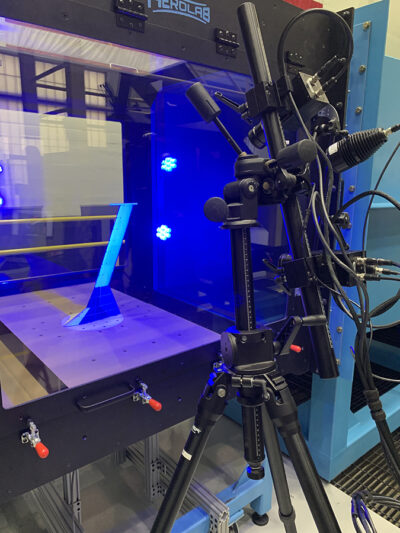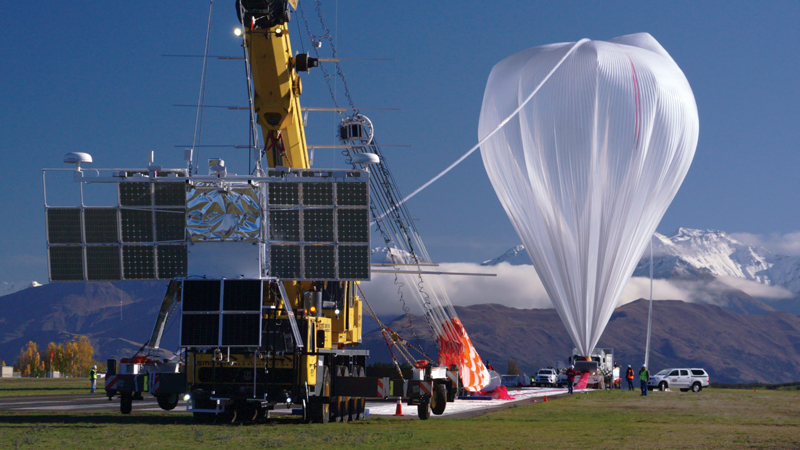Reusable vehicles come to forefront
By Dale Arney|December 2016
The Space Transportation Technical Committee works to foster continuous improvements to civil, commercial and military launch vehicles.
While NASA continues developing systems for its journey to Mars, industry is pushing forward in key space transportation technologies such as reusability and crew access to space.
SpaceX and Blue Origin are leading the innovation in creating reusable launch vehicles. After SpaceX returned a Falcon 9 first stage to a landing zone near the launch site in April, it recovered five of the next eight, both at the landing zone and on a drone ship in the Atlantic Ocean. SpaceX test-fired one of the recovered stages in July, and has its first paying customer lined up to use a returned Falcon 9 core projected to launch in late 2016.
To support their plans for large-scale human exploration, Blue Origin and SpaceX revealed the New Glenn and Mars Colonial Transporter heavy lift launch vehicles, respectively, set to begin launching in the early 2020s. Meanwhile, DARPA announced phase 2 of its Experimental Spaceplane program to develop technologies needed to achieve “aircraft-like” operability, cost efficiency and reliability in launch vehicles.
In support of its journey to Mars, NASA is qualifying the solid booster and RS-25 main engines for the Space Launch System, or SLS, heavy lift launch vehicle. In June, the booster completed a qualification test and the RS-25 completed a full power test in August. In July, the Government Accountability Office’s review of the SLS, Orion crew capsule, and ground operations programs revealed that these systems face challenges to completing their inaugural flight on schedule.
SpaceX and Orbital ATK continued to perform under the first Commercial Resupply Services contract, CRS-1, to deliver cargo to the International Space Station, or ISS. While Orbital has used the Atlas V launch vehicle to deliver cargo in 2016, its Antares launch vehicle returned to flight in October with a supply mission to the space station after a static test fire in May. SpaceX returned to flight in December 2015 and has since resumed delivering cargo to the ISS in its Dragon capsule.
NASA in January announced the CRS-2 contract to deliver cargo to ISS in 2019-2024 and added Sierra Nevada’s Dream Chaser spacecraft to the two incumbents. SpaceX and Boeing continue to test the Crew Dragon and Starliner capsules, respectively, to start delivering crew to ISS starting in 2017 or 2018.
United Launch Alliance, ULA, continues providing access to space for its science, national security, human spaceflight and commercial customers. OSIRIS-REx, Origins, Spectral Interpretation, Resource Identification, Security, Regolith Explorer, was launched in September and marked ULA’s 111th successful launch.
SpaceX and Blue Origin are leading the development of methane rocket engines. Blue Origin’s BE-4 component testing continued; the engine is planned for future Blue Origin launch vehicles. SpaceX’s Raptor is undergoing integrated engine testing. The Air Force announced a series of contracts to promote domestic engine production at ULA, Aerojet Rocketdyne, SpaceX and Orbital ATK.
Internationally, the Indian space agency launched and recovered a subscale shuttle-like vehicle to advance its ability to produce a reusable launch vehicle. Also in 2016, Russia began launching from the Vostochny Cosmodrome, and China inaugurated the Wenchang Satellite Launch Center with the first flight of the Long March 7 launch vehicle.
With the increasing demand for small satellites like cubesats, providers of small launchers are working to be competitive with secondary payload opportunities on larger launch vehicles. Rocket Lab, Firefly Space Systems and Virgin Galactic are all developing less-than-500 kilogram-class launch vehicles that innovate in areas such as engine design, electric propellant pumps and composite structures. ★



































